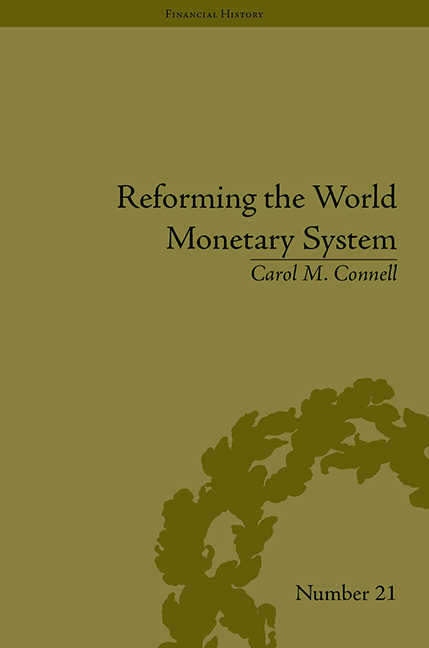Book contents
- Frontmatter
- Contents
- Acknowledgements
- List of Figures and Tables
- Introduction
- 1 A Crisis in Confidence
- 2 Fritz Machlup, his Research and Methodology
- 3 Robert Triffin and the Triffin Plan
- 4 William Fellner and the Intersection of Macro and Microeconomics
- 5 Why Economists Disagree: The Role of Framing in Consensus Building
- 6 ‘Assuring the Free World's Liquidity’ through Multiple Reserve Currencies
- 7 Milton Friedman and the Arguments for Flexible versus Fixed Exchange Rates
- 8 Collaboration with the Group of Ten
- 9 Adjustment Policies and Special Drawing Rights: Joint Meetings of Officials and Academics
- 10 From the Bellagio Group to the Bürgenstock Conferences
- 11 From the Bellagio Group and Joint Conferences of Officials and Academics to the Group of Thirty
- 12 Reassessing the Bellagio Group's Impact on International Monetary Reform
- 13 The Impact of the Bellagio Group on International Trade and Finance Scholarship from the 1960s to the Present
- Conclusions
- Notes
- Works Cited
- Index
10 - From the Bellagio Group to the Bürgenstock Conferences
- Frontmatter
- Contents
- Acknowledgements
- List of Figures and Tables
- Introduction
- 1 A Crisis in Confidence
- 2 Fritz Machlup, his Research and Methodology
- 3 Robert Triffin and the Triffin Plan
- 4 William Fellner and the Intersection of Macro and Microeconomics
- 5 Why Economists Disagree: The Role of Framing in Consensus Building
- 6 ‘Assuring the Free World's Liquidity’ through Multiple Reserve Currencies
- 7 Milton Friedman and the Arguments for Flexible versus Fixed Exchange Rates
- 8 Collaboration with the Group of Ten
- 9 Adjustment Policies and Special Drawing Rights: Joint Meetings of Officials and Academics
- 10 From the Bellagio Group to the Bürgenstock Conferences
- 11 From the Bellagio Group and Joint Conferences of Officials and Academics to the Group of Thirty
- 12 Reassessing the Bellagio Group's Impact on International Monetary Reform
- 13 The Impact of the Bellagio Group on International Trade and Finance Scholarship from the 1960s to the Present
- Conclusions
- Notes
- Works Cited
- Index
Summary
Introduction
Through 1967, the IMF and the Group of Ten continued publicly to insist that the prevailing system of fixed parities had worked well, and they showed no desire to consider greater exchange rate flexibility as a means to improve the international monetary system, having recently created special drawing rights (SDRs) on the IMF to address the liquidity problem. No success had yet been achieved in integrating the domestic monetary and fiscal policies of the members of the international monetary system, although currency convertibility at fixed exchange rates was expected. Nevertheless, behind the scenes and in academic circles, greater exchange rate flexibility had begun to gain traction.
Chapter 10 deals with the extension of the Bellagio Group model to a new audience. The focus of these meetings was the choice of exchange rate regime, particularly floating in a variety of guises. Like the first four Bellagio Group meetings, the Bürgenstock meetings were orchestrated by Machlup, using his tools for defining terms and sniffing out value judgements; the meetings also introduced the group to Machlup's variations on scenario analysis. Unlike the Joint Meetings of Officials and Academics, the agenda was firmly in his control. Like the first Joint Meetings around payments adjustment, the outcome of the Bürgenstock conferences was the publication of a book.
- Type
- Chapter
- Information
- Reforming the World Monetary SystemFritz Machlup and the Bellagio Group, pp. 143 - 160Publisher: Pickering & ChattoFirst published in: 2014



